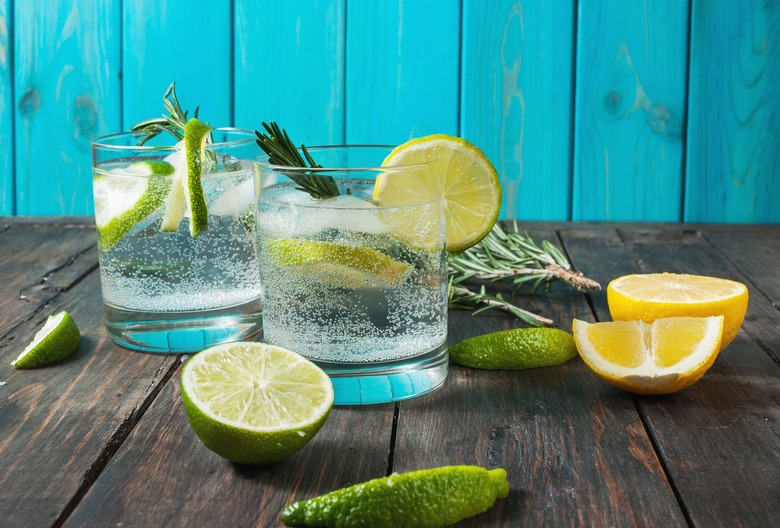The Reason Tonic Water Glows In The Dark
If you were to look at a gin and tonic (or vodka and tonic, or anything with tonic, for that matter) under ultraviolet light, you might be surprised to see it glow — and you might naturally wonder what produces the eerie effect.
The answer is surprisingly simple: Tonic water actually contains the chemical quinine, which fluoresces under certain light and makes tonic water glow. According to Scientific American "In general, something fluoresces because it has absorbed light energy, which makes it excited, and then it releases (or emits) light as it returns to its normal, unexcited state." Quinine absorbs ultraviolet light and then re-emits it as visible light, meaning it appears to glow when other materials remain dark.
But why does tonic water contain quinine in the first place? Because it was once used to treat malaria. The quinine powder that British colonialists in India had to take to prevent malaria was so bitter that they began mixing it with sugar and soda water, which, in turn, they mixed with gin. Voila, a classic British cocktail came into being.
You can use the glow-in-the-dark nature of tonic water to create some fun drinks and even to make pies that glow under UV light! So go on, have fun and enjoy that quinine!
